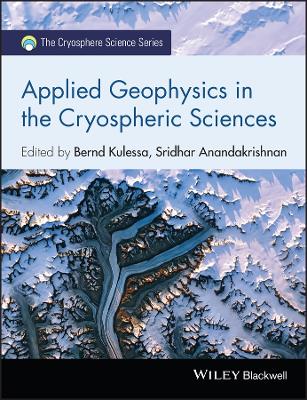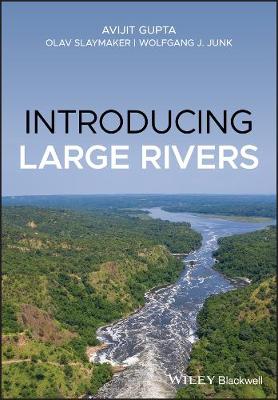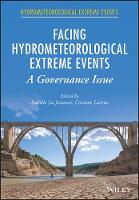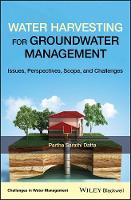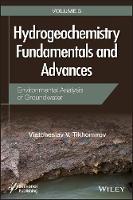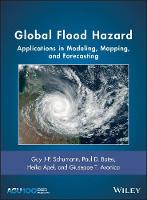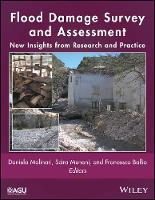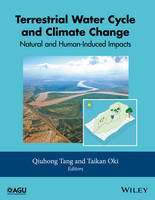Fluid Flow in Fractured Rocks
 -15%
portes grátis
-15%
portes grátis
Fluid Flow in Fractured Rocks
Zimmerman, Robert W.; Paluszny, Adriana
John Wiley & Sons Inc
02/2024
288
Dura
Inglês
9781119248019
15 a 20 dias
Author Biographies xi
About the Companion Website xiii
1 Genesis and Morphology of Fractures in Rock 1
1.1 What Are Fractures, and Why Are They Important? 1
1.2 Formation of Fractures in Rock 2
1.3 Morphology of Single Fractures 5
1.4 Morphology of Fracture Networks 14
2 Fluid Flow in a Single Fracture 27
2.1 Introduction 27
2.2 The Navier-Stokes Equations and the Cubic Law 28
2.3 The Stokes Equations 32
2.4 The Reynolds Lubrication Equation 36
2.5 Effect of Contact Area 41
2.6 Accuracy of the Lubrication Model 43
2.7 Fracture in a Permeable Matrix 46
2.8 Fracture Filled with Porous or Granular Material 49
3 Effect of Stress on Fracture Transmissivity 57
3.1 Introduction 57
3.2 The Effect of Normal Stress on Fracture Deformation 58
3.3 Models for the Normal Stiffness of Rock Fractures 60
3.4 "Row of Elliptical Voids" Model for Fracture Transmissivity 63
3.5 Relation Between Transmissivity and Mean Aperture During Normal Compression 68
3.6 Effect of Shear Deformation on Fracture Transmissivity 70
4 Fluid Flow Through Fractures at Moderate to High Reynolds Numbers 75
4.1 Introduction 75
4.2 Approximate Analytical Solution for a Sinusoidal Fracture Aperture 76
4.3 Weak Inertia Regime and Forchheimer Regime 77
4.4 Verification of theWeak Inertia and Forchheimer Regimes 80
4.5 Experimental Data on Fluid Flow at Moderate to High Reynolds Numbers 84
4.6 Flow of Compressible Gases Through Fractures 85
5 Thermo-Hydro-Chemical-Mechanical Effects on Fracture Transmissivity 91
5.1 Introduction 91
5.2 Fracture Contact 92
5.3 Pressure Dissolution 94
5.4 Diffusion Rates 97
5.5 Solute Precipitation 98
5.6 Aperture Changes 99
5.7 Relationship Between Aperture, Contact Fraction, and Transmissivity 101
5.8 Numerical Simulations of Pressure Solution 103
5.9 Lehner-Leroy Model for Pressure Dissolution 104
5.10 Bernabe-Evans Model for Pressure Dissolution 106
5.11 Dissolution and Precipitation in Open and Closed Systems 109
6 Solute Transport in a Single Fracture 113
6.1 Introduction 113
6.2 Advection-Diffusion Equation 114
6.3 Taylor-Aris Problem in a Uniform Channel 118
6.4 Influence of Fracture Morphology on Solute Transport 121
6.5 Non-Fickian Transport in Rock Fractures 123
6.6 Influence of Adsorption, Matrix Diffusion, and Radioactive Decay 126
7 Analytical Models for the Permeability of a Fractured Rock Mass 133
7.1 Introduction 133
7.2 Snow's Model of Planar Fractures of Infinite Extent in an Impermeable Matrix 134
7.3 Upper and Lower Bounds on the Effective Permeability 136
7.4 Spheroidal Inclusion Model of a Fractured Rock Mass 137
7.5 Effective Permeability in the Regime (?/? much less than) 140
7.6 Effective Permeability in the Regime (?/? much greater than) 142
7.7 Semi-empirical Model of Mourzenko et al. 144
8 Fluid Flow in Geologically Realistic Fracture Networks 149
8.1 Introduction 149
8.2 Stochastically Generated Fracture Networks 150
8.3 Geomechanically Generated Fracture Networks 152
8.4 Intersections and Connectivity in Fracture Networks 155
8.5 Fracture Apertures in Discrete Fracture Networks 156
8.6 Numerical Computation of Fractured Rock Mass Permeability 159
8.7 Effect of Fracture Density on Equivalent Permeability 163
8.8 Effect of In Situ Stresses on Equivalent Permeability 166
8.9 Channels and Preferential Flow Pathways 170
9 Dual-Porosity Models for Fractured-Porous Rocks 177
9.1 Introduction 177
9.2 Pressure Diffusion Equation for the Fractured Continuum 178
9.3 Fracture/Matrix Fluid Interaction Term 180
9.4 Equation for the Evolution of the Mean Pressure in the Matrix Blocks 182
9.5 Warren-Root Solution for Flow to aWell in a Dual-Porosity Medium 184
9.6 Fully Transient model for Matrix-to-Fracture Flow 188
9.7 Nonlinear Matrix-Fracture Transfer Model 190
9.8 Multi-Phase Flow, Gravity Effects, and Other Extensions 193
10 Matrix Block Shape Factors 199
10.1 Introduction 199
10.2 Approaches to Choosing the Shape Factor 200
10.3 Some Specific Results and General Theorems 202
10.4 Upper and Lower Bounds on the Shape Factor 203
10.5 Methodology for Numerical Calculation of the Shape Factor 204
10.6 Scaling Laws for Irregularly Shaped Matrix Blocks 207
10.7 Shape Factor Under Constant-Flux Boundary Conditions 209
10.8 Constant-Flux Shape Factor for a Brick-like Matrix Block 213
11 Solute Transport in Fractured Rock Masses 219
11.1 Introduction 219
11.2 Advection-Dispersion and Solute Transport Equations 220
11.3 Numerical Solution of the Advection-Dispersion and Solute Transport Equations 222
11.4 Non-Fickian Transport 226
11.5 Channel Models 227
11.6 Particle Tracking Methods 230
11.7 Continuous Time RandomWalk Approach 232
11.8 Effects of Matrix Permeability 234
11.9 Effects of In Situ Stresses 235
12 Two-Phase Flow in Fractured Rocks 241
12.1 Introduction 241
12.2 Basic Concepts of Two-Phase Flow 242
12.3 Pruess-Tsang Model of Two-Phase Flow in a Single Fracture 246
12.4 Other Models and Observations of Two-Phase Flow in a Single Fracture 248
12.5 Dual-Porosity and Dual-Permeability Models for Two-Phase Flow 251
12.6 Discrete-Fracture Network Models for Two-Phase Flow in Fractured Rock Masses 254
Problems 256
References 256
List of Symbols 259
Index 265
Author Biographies xi
About the Companion Website xiii
1 Genesis and Morphology of Fractures in Rock 1
1.1 What Are Fractures, and Why Are They Important? 1
1.2 Formation of Fractures in Rock 2
1.3 Morphology of Single Fractures 5
1.4 Morphology of Fracture Networks 14
2 Fluid Flow in a Single Fracture 27
2.1 Introduction 27
2.2 The Navier-Stokes Equations and the Cubic Law 28
2.3 The Stokes Equations 32
2.4 The Reynolds Lubrication Equation 36
2.5 Effect of Contact Area 41
2.6 Accuracy of the Lubrication Model 43
2.7 Fracture in a Permeable Matrix 46
2.8 Fracture Filled with Porous or Granular Material 49
3 Effect of Stress on Fracture Transmissivity 57
3.1 Introduction 57
3.2 The Effect of Normal Stress on Fracture Deformation 58
3.3 Models for the Normal Stiffness of Rock Fractures 60
3.4 "Row of Elliptical Voids" Model for Fracture Transmissivity 63
3.5 Relation Between Transmissivity and Mean Aperture During Normal Compression 68
3.6 Effect of Shear Deformation on Fracture Transmissivity 70
4 Fluid Flow Through Fractures at Moderate to High Reynolds Numbers 75
4.1 Introduction 75
4.2 Approximate Analytical Solution for a Sinusoidal Fracture Aperture 76
4.3 Weak Inertia Regime and Forchheimer Regime 77
4.4 Verification of theWeak Inertia and Forchheimer Regimes 80
4.5 Experimental Data on Fluid Flow at Moderate to High Reynolds Numbers 84
4.6 Flow of Compressible Gases Through Fractures 85
5 Thermo-Hydro-Chemical-Mechanical Effects on Fracture Transmissivity 91
5.1 Introduction 91
5.2 Fracture Contact 92
5.3 Pressure Dissolution 94
5.4 Diffusion Rates 97
5.5 Solute Precipitation 98
5.6 Aperture Changes 99
5.7 Relationship Between Aperture, Contact Fraction, and Transmissivity 101
5.8 Numerical Simulations of Pressure Solution 103
5.9 Lehner-Leroy Model for Pressure Dissolution 104
5.10 Bernabe-Evans Model for Pressure Dissolution 106
5.11 Dissolution and Precipitation in Open and Closed Systems 109
6 Solute Transport in a Single Fracture 113
6.1 Introduction 113
6.2 Advection-Diffusion Equation 114
6.3 Taylor-Aris Problem in a Uniform Channel 118
6.4 Influence of Fracture Morphology on Solute Transport 121
6.5 Non-Fickian Transport in Rock Fractures 123
6.6 Influence of Adsorption, Matrix Diffusion, and Radioactive Decay 126
7 Analytical Models for the Permeability of a Fractured Rock Mass 133
7.1 Introduction 133
7.2 Snow's Model of Planar Fractures of Infinite Extent in an Impermeable Matrix 134
7.3 Upper and Lower Bounds on the Effective Permeability 136
7.4 Spheroidal Inclusion Model of a Fractured Rock Mass 137
7.5 Effective Permeability in the Regime (?/? much less than) 140
7.6 Effective Permeability in the Regime (?/? much greater than) 142
7.7 Semi-empirical Model of Mourzenko et al. 144
8 Fluid Flow in Geologically Realistic Fracture Networks 149
8.1 Introduction 149
8.2 Stochastically Generated Fracture Networks 150
8.3 Geomechanically Generated Fracture Networks 152
8.4 Intersections and Connectivity in Fracture Networks 155
8.5 Fracture Apertures in Discrete Fracture Networks 156
8.6 Numerical Computation of Fractured Rock Mass Permeability 159
8.7 Effect of Fracture Density on Equivalent Permeability 163
8.8 Effect of In Situ Stresses on Equivalent Permeability 166
8.9 Channels and Preferential Flow Pathways 170
9 Dual-Porosity Models for Fractured-Porous Rocks 177
9.1 Introduction 177
9.2 Pressure Diffusion Equation for the Fractured Continuum 178
9.3 Fracture/Matrix Fluid Interaction Term 180
9.4 Equation for the Evolution of the Mean Pressure in the Matrix Blocks 182
9.5 Warren-Root Solution for Flow to aWell in a Dual-Porosity Medium 184
9.6 Fully Transient model for Matrix-to-Fracture Flow 188
9.7 Nonlinear Matrix-Fracture Transfer Model 190
9.8 Multi-Phase Flow, Gravity Effects, and Other Extensions 193
10 Matrix Block Shape Factors 199
10.1 Introduction 199
10.2 Approaches to Choosing the Shape Factor 200
10.3 Some Specific Results and General Theorems 202
10.4 Upper and Lower Bounds on the Shape Factor 203
10.5 Methodology for Numerical Calculation of the Shape Factor 204
10.6 Scaling Laws for Irregularly Shaped Matrix Blocks 207
10.7 Shape Factor Under Constant-Flux Boundary Conditions 209
10.8 Constant-Flux Shape Factor for a Brick-like Matrix Block 213
11 Solute Transport in Fractured Rock Masses 219
11.1 Introduction 219
11.2 Advection-Dispersion and Solute Transport Equations 220
11.3 Numerical Solution of the Advection-Dispersion and Solute Transport Equations 222
11.4 Non-Fickian Transport 226
11.5 Channel Models 227
11.6 Particle Tracking Methods 230
11.7 Continuous Time RandomWalk Approach 232
11.8 Effects of Matrix Permeability 234
11.9 Effects of In Situ Stresses 235
12 Two-Phase Flow in Fractured Rocks 241
12.1 Introduction 241
12.2 Basic Concepts of Two-Phase Flow 242
12.3 Pruess-Tsang Model of Two-Phase Flow in a Single Fracture 246
12.4 Other Models and Observations of Two-Phase Flow in a Single Fracture 248
12.5 Dual-Porosity and Dual-Permeability Models for Two-Phase Flow 251
12.6 Discrete-Fracture Network Models for Two-Phase Flow in Fractured Rock Masses 254
Problems 256
References 256
List of Symbols 259
Index 265


